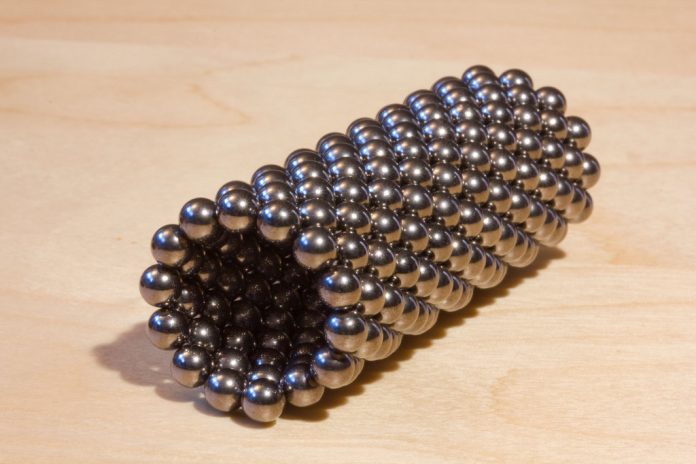From computers to medical devices, magnets power a wide range of technology that we use everyday. However, rare earth magnets scarce due to their cost and difficulty to obtain. This has lead researchers to investigate methods of finding new magnetic compounds. Researchers at Duke University have used computational models to predict compounds that have magnetic properties.
“Many high-performance permanent magnets contain rare earth elements.” said Corey Oses, a doctoral student at Duke. “And rare earth materials can be expensive and difficult to acquire, particularly those that can only be found in Africa and China. The search for magnets free of rare-earth materials is critical, especially as the world seems to be shying away from globalization.”
The researchers used 55 elements and started with a total of 236,115 possible magnetic compounds. Stefano Curtarolo, professor of mechanical engineering and materials science and Director of the Center for Materials Genomics at Duke said “Predicting magnets is a heck of a job and their discovery is very rare” and “Even with our screening process, it took years of work to synthesize our predictions.”
After generating their list of predictions, researchers used computational models to find any potentially stable compounds with magnetic moments. After narrowing down the list to 14, the researchers were ready to begin testing their models. “There can be all types of constraints or special conditions that are required for a material to stabilize. But choosing from 14 is a lot better than 200,000.” said Oses.
After trying for years to create four of their predicted materials, the Duke researchers turned to physics Professor Stefano Sanvito from Trinity College in Dublin, Ireland. Sanvito found success in creating two of the materials. As predicted, both materials demonstrated magnetic moments.
The first material Sanvito was able to make was made of cobalt, manganese, and titanium. As predicted this material maintained its magnetic property under very extreme temperatures. This combination of resistance to heat as well as lack of rare earth material makes this potentially useful in high heat conditions like in motors.
The second material Sanvito made consisted of manganese, platinum, and palladium. This mixture turned out to be antiferromagnet. This means that it has no internal magnetism of its own, but responds to external magnetic fields. Applications would include monitoring magnetic fields as well as in hard drives and RAM.











